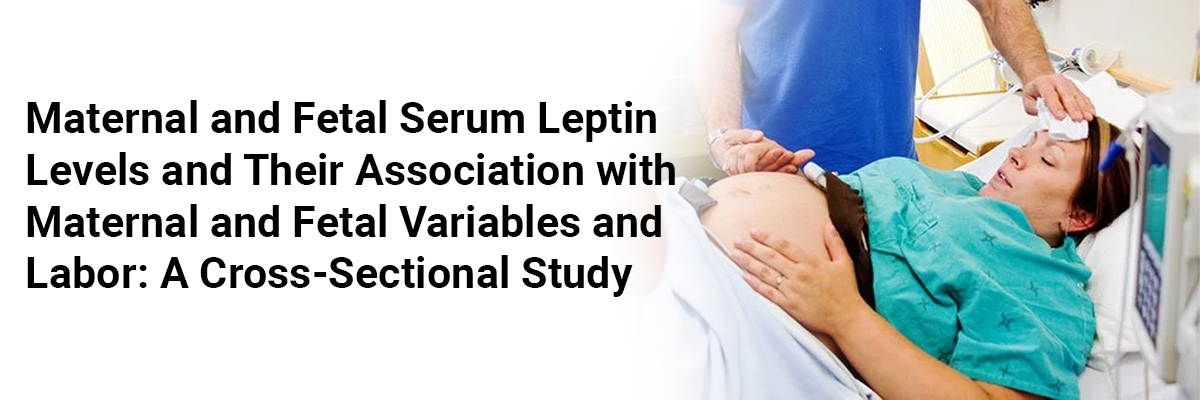
 IJCP Editorial Team
IJCP Editorial Team
Maternal and fetal serum leptin levels and their association with maternal and fetal variables and labor: A cross-sectional study
Leptin is produced by the white adipose tissue and the placenta during pregnancy. The pathophysiology of several disorders of reproduction and gestation, including polycystic ovary syndrome, recurrent miscarriage, gestational diabetes mellitus (GDM), pre-eclampsia, and intrauterine growth restriction (IGUR), has been associated with leptin level dysregulation. But there is not enough definite indication about the role of leptin in pathological states of pregnancy. Therefore, in a recent cross-sectional study, researchers measured fetal and maternal serum leptin levels and investigated their association with fetal and maternal characteristics, antenatal complications, and labor.
The study was conducted at the department of obstetrics and gynecology in King Abdullah University Hospital (KAUH) in Jordan. 452 pregnant women, who attended to labor ward between January 2020 and August 2020, were included in the study. The quantitative measurement of leptin in serum was performed by experienced personnel in a research laboratory using an enzyme-linked immunosorbent assay (ELISA) method. The median age of women who participated in the study was 31 years, and the median body mass index was 29.9 [27.3–33.2] kg/m2. A total of 48 (10.6%) medical conditions and 139 (30.8%) antenatal complications were recorded. The most frequent medical condition among pregnant mothers was hypothyroidism (6%), and the most common antenatal complication was SGA (10%), followed by LGA (7.3%) and GDM (5.5%). The terms "small for gestational age" (SGA) and "large for gestational age" (LGA) were used to describe prenatal difficulties. SGA was defined as birth weight below the 10 th percentile for gestational age, and LGA as birth weight over the 90th percentile for age. The median gestational age of fetuses was 37.9 [37.1–38.9] weeks, and the median birth weight was 3.1 [2.8–3.4] kg. Apgar scores at 1 and 5 mins were 8 [8-8] and 9 [9-9], respectively. Out of 452 pregnant women, 289 (63.9%) had vaginal deliveries, and 163 (36.1%) women had cesarean sections. The main indication for cesarean delivery was previous cesarean sections. In addition, 320 (70.8%) women were in established labor, 36 (8%) were in the latent phase, and 96 were not in labor.
The median maternal and fetal serum leptin levels were 6.42 [4.16–8.51] ng/mL and 2.9 [1.03–5.36] ng/mL, respectively. But, there was no significant correlation between maternal and fetal serum leptin levels (p = 0.064). Maternal serum leptin levels had positive correlation with maternal BMI (r = 0.117, p = 0.005) and were significantly higher in nulliparous women (7.57 [4.45–9.30] ng/mL vs. 6.22 [4.02–8.30] ng/mL, p = 0.037) and in women who were in established labor (6.83 [4.39–8.92] ng/mL vs. 6.25 [4.04–8.30] ng/mL, p = 0.047). There was no association between maternal serum leptin levels and maternal age, gestational age of the fetus, fetal weight and gender, and mode of delivery. Fetal serum leptin levels were significantly higher in LGA fetuses (4.81 [2.13–7.22] ng/mL vs. 2.80 [0.96–5.16] ng/mL, p = 0.003) and in fetuses with preterm premature ruptures of membranes (PPROM) (5.23 [2.42–8.07] ng/mL vs. 2.86 [1.00–5.23] ng/mL, p = 0.021). Hence, the study concluded that maternal serum leptin levels were influenced by maternal BMI, parity, and labor. Fetal serum leptin levels were higher among LGA fetuses and in fetuses with PPROM.
Obeidat R A, et al. Ann Med Surg (Lond). 2021;72:103050.

IJCP Editorial Team
Comprising seasoned professionals and experts from the medical field, the IJCP editorial team is dedicated to delivering timely and accurate content and thriving to provide attention-grabbing information for the readers. What sets them apart are their diverse expertise, spanning academia, research, and clinical practice, and their dedication to upholding the highest standards of quality and integrity. With a wealth of experience and a commitment to excellence, the IJCP editorial team strives to provide valuable perspectives, the latest trends, and in-depth analyses across various medical domains, all in a way that keeps you interested and engaged.





















Please login to comment on this article